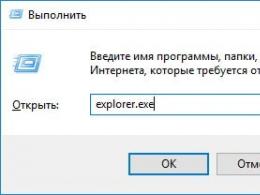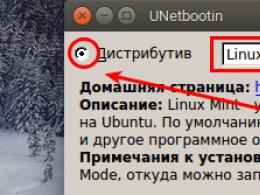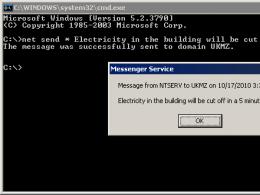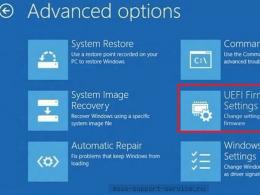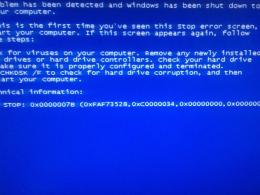Reference information about the net send command.
To those computers on the network from which you want to send messages.
Understanding the net send command
Net send is a console application included with some versions of Windows for sending messages over a local network to another user, computer, or alias. The command is only available on Windows NT, 2000, XP, 2003 and is not available on Windows 7, Vista, ME, 98, 95 and older. In Windows XP, starting with Service Pack 2, the net send command is disabled by default.
Using the net send command
The Windows Messaging Service must be running for the net send program to work. In fact, the net send command is just a command line interface to the messaging service, which is directly involved in sending and receiving messages. To be able to receive messages, the computer to which the message is sent must also be running a messaging service or another program that uses the same protocol for messaging. A message can only be sent to an active object on the network. If a message is sent to a user, the user must be logged in with their username.To send messages with the net send command, start a command interpreter (command prompt). To start the shell, select Run from the Start menu, type cmd, and then click OK. Use the net command with the send parameter and other parameters according to the command syntax. The messaging service displays received messages in a standard Windows message dialog box.

Net send command syntax
The net send command has the following syntax:net send (username | * | /domain[:domainname] | /users) message
username- username, computer name or alias to which you want to send a message;
* - sending messages to all members of a domain or workgroup;
/domain[:domainname]- sending a message to all names in the computer's domain or in the domainname domain;
/users- sending a message to all users connected to the server;
message- Message text.
Notes on using the net send command
If the command parameter arguments contain spaces, they must be enclosed in quotation marks.There may be difficulties when using long names of message recipients. The names used by the messaging service are up to 15 characters long.
Broadcast message length limit is 128 characters. The maximum length of personal messages is 1600 characters.
Examples of using the net send command
To send a message "You can send a message over the local network using the net send command" to the user ivanov, enter:net send ivanov You can send a message over the local network using the net send command
To send a message to all users connected to the computer from which the message is being sent, type:
net send /users Everyone immediately exit 1C!
To send a message to all users in the ukmz domain, type:
net send /domain:ukmz Electricity in the building will be turned off in 5 minutes
To send a message to all users in the domain of the computer from which the message is being sent, type:
net send * Gentlemen, the meeting with the CEO will take place at 13:00
Enabling and disabling the messaging service and net send
Enabling and disabling the messaging service is possible through both the MMC console (Services snap-in) and using the command line. To perform these operations, you must have administrator rights.
To enable the messaging service using the MMC console, follow these steps: Go to the Control Panel. Open Administrative Tools, Services. Find "Messenger" in the list. Open the service properties window. Select "Auto" from the "Startup Type" list if you want the service to automatically start when Windows boots. Then click the Start button. Click OK. 
To disable the messaging service, perform the following sequence of actions: Go to the Control Panel. Open Administrative Tools, Services. Find "Messenger" in the list. Open the service properties window. Select Manual from the Startup Type list. Then click the Stop button. Click OK. 
To enable the messaging service from the command line, enter the following commands in the shell:
sc config messenger start= auto
net start messenger
To disable the messaging service from the command line, enter the following commands in the shell:
net stop messenger
sc config messenger start= disabled
How to send net send messages in Windows 7
To send net send messages in those versions of Windows where this command is missing (Windows 7, Vista, ME, 95, 98), you can use third-party software. We suggest you use two programs: WinSent Messenger and the Sent utility. WinSent Messenger is a LAN messenger compatible with net send. The Sent utility is designed to send messages from the command line. More detailed information is available on the pages of these software products:Check if the system supports the msg command. The functionality of this command is very similar to that of the unused net send command. But this command only works in professional and enterprise versions of Windows. If you're on Windows Home, upgrade to Professional or Enterprise to use the msg command.
- For Windows version, click ⊞Win+Pause or right-click on "Computer" and select "Properties". The Windows version will appear under Windows Edition.
Open a command prompt. Like net send , the msg command is run from the command line. The command prompt is launched in different ways (depending on the version of Windows), or just press ⊞ Win and type cmd.
- Windows Vista/7: Open Command Prompt from the Start Menu.
- Windows 8.1/10: Right-click the Start button and select Command Prompt.
- Windows 8: click ⊞ Win+X and select Command Prompt.
Enter a command. Type msg and press Space. Next, you need to enter information that contains the text and direction of the message.
Specify the recipient of the message. Compared to net send , the msg command has additional options.
- msg username - enter the name of a specific user.
- msg session - enter the name of a specific session.
- msg session ID - Enter the ID of a specific session.
- msg @ filename - Enter the name of a file that contains a list of usernames, sessions, and/or session IDs. Useful for sending messages to department employees.
- msg * - the message will be sent to all users who are connected to the server.
Specify the server whose users you want to send the message to (if you want). If you want to send a message to a user who is connected to another server, enter the server information after the recipient information. If no server is specified, the message will be sent to the current server.
- msg * /server: server name
Set a time limit (if you want). You can set a time limit to specify the interval to wait for confirmation from the recipient. The temporary modifier is entered after the server information (if any).
- msg * /time: seconds (e.g. 300 seconds for a five minute interval)
Enter your message text. After entering the various options, enter the message text. Or click ↵Enter, and the system prompts you to enter the text of the message on a separate line.
- For example: msg @salesteam /server:EASTBRANCH /time:600 Congratulations on the increase in sales this quarter!
Send a message. To do this, click ↵Enter. The recipient will receive it immediately.
- The msg command is designed to send messages to terminal users, not just different computers connected to the same network.
Troubleshoot. When working with msg, you may encounter the following errors:
- "msg" is not recognized as an internal or external command, operable program or batch file. (msg is not recognized as an internal or external command, operable program, or batch file). In this case, the Windows version does not support msg . Upgrade Windows to Professional edition.
- Error 5 getting session names or Error 1825 getting session names. An error occurred while communicating with the recipient. You can try to fix this problem by opening the registry editor on the recipient's computer (to do this, run the regedit command), go to HKEY_LOCAL_MACHINE\SYSTEM\CurrentControlSet\Control\Terminal Server and change the value of the "AllowRemoteRPC" parameter from 0 to 1.
Using the net send command
The Windows Messaging Service must be running for the net send program to work. In fact, the net send command is just a command line interface to the messaging service, which is directly involved in sending and receiving messages. To be able to receive messages, the computer to which the message is sent must also be running a messaging service or another program that uses the same protocol for messaging. A message can only be sent to an active object on the network. If a message is sent to a user, the user must be logged in with their username.
To send messages with the net send command, start a command interpreter (command prompt). To start the shell, select Run from the Start menu, type cmd, and then click OK. Use the net command with the send parameter and other parameters according to the command syntax. The messaging service displays received messages in a standard Windows message dialog box.

Net send command syntax
The net send command has the following syntax:
net send (username | * | /domain[:domainname] | /users) message
username - username, computer name or alias to which you want to send a message;
* - send messages to all members of a domain or workgroup;
/domain[:domainname] - send a message to all names in the computer's domain or in the domainname domain;
/users - send a message to all users connected to the server;
message - message text.
Notes on using the net send command
If the command parameter arguments contain spaces, they must be enclosed in quotation marks.
There may be difficulties when using long names of message recipients. The names used by the messaging service are up to 15 characters long.
Broadcast message length limit is 128 characters. The maximum length of personal messages is 1600 characters.
Examples of using the net send command
To send a message "You can send a message over the local network using the net send command" to the user ivanov, enter:
net send ivanov You can send a message over the local network using the net send command
To send a message to all users connected to the computer from which the message is being sent, type:
net send /users Everyone immediately exit 1C!
To send a message to all users in the ukmz domain, type:
net send /domain:ukmz Electricity in the building will be turned off in 5 minutes
To send a message to all users in the domain of the computer from which the message is being sent, type:
net send * Gentlemen, the meeting with the CEO will take place at 13:00
Enabling and disabling the messaging service and net send
Enabling and disabling the messaging service and net send
Enabling and disabling the messaging service is possible through both the MMC console (Services snap-in) and using the command line. To perform these operations, you must have administrator rights.

To enable the messaging service using the MMC console, follow these steps: Go to the Control Panel. Open Administrative Tools, Services. Find "Messenger" in the list. Open the service properties window. Select "Auto" from the "Startup Type" list if you want the service to automatically start when Windows boots. Then click the Start button. Click OK.

To disable the messaging service, perform the following sequence of actions: Go to the Control Panel. Open Administrative Tools, Services. Find "Messenger" in the list. Open the service properties window. Select Manual from the Startup Type list. Then click the Stop button. Click OK.
To enable the messaging service from the command line, enter the following commands in the shell:
sc config messenger start= auto
net start messenger
To disable the messaging service from the command line, enter the following commands in the shell:
net stop messenger
sc config messenger start= disabled
How to send net send messages in Windows 7
To send net send messages in those versions of Windows where this command is missing (Windows 7, Vista, ME, 95, 98), you can use third-party software. We suggest you use two programs: WinSent Messenger and the Sent utility. WinSent Messenger is a LAN messenger compatible with net send. The Sent utility is designed to send messages from the command line. More detailed information is available on the pages of these software products:
WinSent Messenger - messenger for local network

